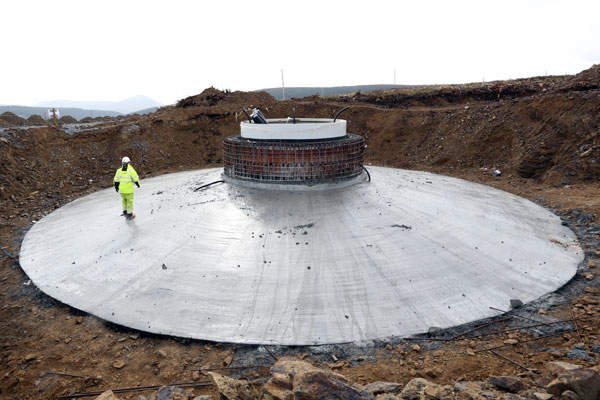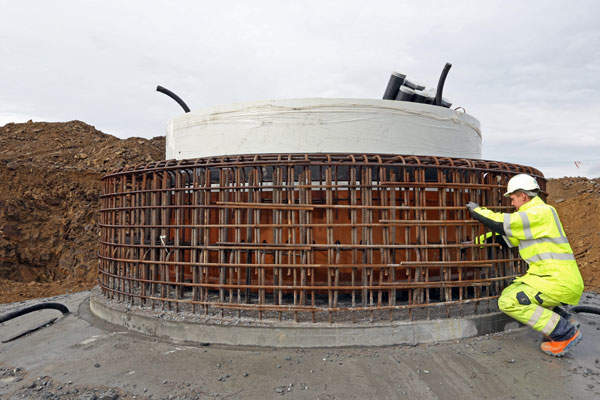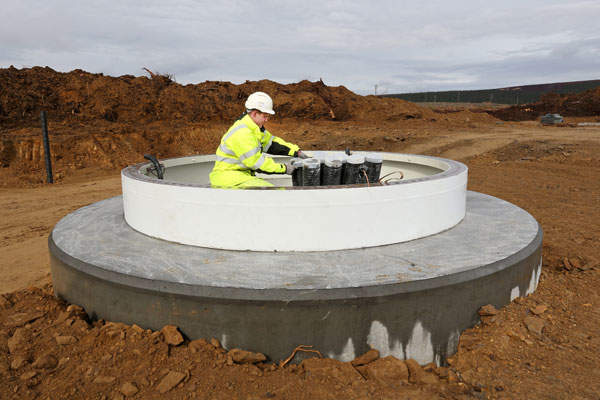Clashindarroch Wind Farm is a 36.9MW onshore renewable power project developed by Vattenfall in Clashindarroch Forest, near Huntly, Aberdeenshire, Scotland, UK.
The £62m ($94.72m) wind project received planning consent from Aberdeenshire Council in late 2010 and construction began in June 2013. Turbine installation was completed in September 2014 and the wind farm produced first power on 22 January 2015.
When fully commissioned, the wind power facility is estimated to produce more than 110GWh of renewable energy a year, which will be enough to meet the annual electricity needs of approximately 27,000 households. It is also expected to offset 40,000t of CO₂ emissions a year during its 20-year operational life.
Wind turbines at the Clashindarroch wind farm
The Clashindarroch Wind Farm consists of 18 Senvion MM82 onshore wind turbines installed across an area of approximately 4km². Each of the 2.05MW turbines has a rotor diameter of 82m, blade length of 40m, rotor surface of 5,281m² and wing-tip height of 110m. The rotor speeds range from 8.5rpm to 17.1rpm and make the turbines ideal for high-wind locations.
The Senvion MM82 pitch-regulated variable speed turbines are mounted on 69m-high towers weighing 122t.
Grid connection for the Clashindarroch wind farm
The power generated by the wind turbines is transmitted, via underground cables, to a new substation built by Scottish and Southern Energy next to the A920 road at Cairnford. The electricity is stepped up by a 33kV/275kV transformer at the substation and connected to the existing 275kV overhead line to be fed to the national grid.
Construction details of the wind farm in Aberdeenshire
Construction of the Scottish wind farm began with the tree clearance works by the Forestry Commission Scotland and their contractors. A total of 412ha of forest land was cleared and was followed by building 30.5km of access roads to each turbine location.
A reinforced concrete foundation and a crane hard standing were then prepared at each of the 18 turbine locations. Steel reinforcements were installed in the excavation and shuttering was placed at the base to retain the concrete. Each foundation required approximately 300m³ of concrete pouring with the use of long-reaching pumps. Screed rails were used to attain accuracy while pouring the concrete to the desired level.
The poured concrete was allowed to set after the application of a smooth finish. The final section to receive concrete was the upstand section to which the turbine was later bolted. Shuttering was placed around this section and removed once the concrete set. A steel float finish was then given to the concrete foundation and the gap around was backfilled up to 100mm below the top of the upstand section.
Turbines towers, in segments of three, were built at a facility in Chepstow. The Senvion factory in Germany manufactured the turbine blades, which were shipped to the Port of Inverness. The turbine components, including tower sections, gears, generators, nacelle and blades, were transported by road to the site and installed section by section.
Two cranes were employed to lift the tower sections upright, lower them into position and, finally, bolt them into place.
Contractors involved with the Clashindarroch wind project
German wind turbine manufacturer Senvion (formerly REpower Systems), a wholly-owned subsidiary of Suzlon Group, was contracted to supply and install the turbines for the renewable power project in September 2013.
The civil engineering contract for the project was awarded to RJ Mcleod, a construction firm based in Dingwall, Scotland. The scope of work included construction of access roads, foundations and hard standings for the wind turbine installation.
Chepstow-based company Mabey Bridge was awarded a contract to supply the turbine towers in November 2013.






